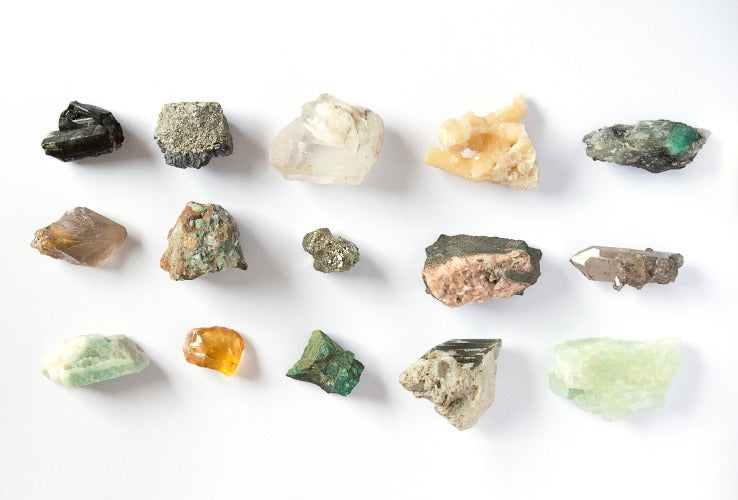Intro
Minerals have always fascinated man, some are attracted by their colors, others by their various shapes, still others are driven by the admiration for nature capable of creating such extraordinary structures. For this reason, there are countless people who try their hand at their collection, from those who do it for work, minerals, in fact, have to do with the field of geology, mineralogy, natural sciences, to those who instead approach from layman to this world to broaden his knowledge and satisfy his curiosity.
The following are little tips for those who want to try their hand at the collection of these fantastic natural bodies.
First of all it is good to point out that there is no correct way to collect minerals, there are several paths that you can follow, everyone must find the one that best suits him.
When you decide to start a new collection, the first thing to do is to evaluate your knowledge on that particular subject, by doing so you avoid the mistake of buying products that do not suit what you are looking for.
As for the mineral collection, it is good to know that the mineral collection is a very vast world, today there are more than 4500 minerals and new ones are discovered every year.
The fact that there are countless minerals should not discourage those approaching this world for the first time, every collector, in general, starts from a small amount of pieces and only over time enriches his collection.
Learn about minerals
If you are a beginner, it is advisable to obtain as much information as possible by reading books, specialized magazines, researching on websites or through any other source on the subject. In this regard, a very good starting point is to visit the mindat.org website, a portal with lots of information and photos for each mineral.
Books, photographic atlases or websites are a good starting point to get to know minerals but a very important factor is to be able to observe them directly up close, so another useful tip is to visit museums and fairs dedicated to this sector. In museums, in particular, it is possible to observe very vast collections and very expensive specimens, which it is difficult or impossible to obtain for a private individual, moreover museums often also include the history of the mines from which the samples come and, therefore, allow to increase the knowledge of this world. At the fairs, however, it is possible to find many retailers and, therefore, a wide range of minerals.
Buy the first samples
Once you have a good knowledge, you can move on to the purchase of the first samples. Although the choice of samples is very large, it is advisable to always start with samples of low economic value, such as quartz, pyrite, fluorite, calcite etc. As you gain experience, you can move on to buying specimens of ever greater value. When buying a mineral, it is advisable to keep in mind that every sample of the same mineral is different from the other, no two natural samples are identical. Sometimes you can come across samples of the same mineral with extremely different prices, this can be due to countless reasons, such as different sizes, different weight or different quality of the sample, but other times the price difference may be due to the choice of the dealer.
Before moving on to purchase, it is a good idea to establish an initial budget to be allocated to the first samples of the collection and then move on to establishing a monthly or annual budget. 
Structuring the collection
Once you have your first samples, you have to decide how to order your collection. Although it is possible to change the grouping order of the samples or the information associated with them at any time, it is advisable to establish a criterion for classifying them right away. The most used criterion is to group the minerals according to their mineralogical class, this method will allow you to have a space dedicated to each family and will be useful when you want to find a specific sample within the collection.
Create descriptive cards for each sample
When you buy a mineral, you take a small step to increase the collection but above all this allows you to experience the thrill of seeing each specimen up close. At this point it is good to create a form where you can report the information that interests you most. In principle, information that cannot be missing is the mineralogical class, the crystalline system, the chemical formula and the origin. Other optional information that can be added are the hardness, the specific weight, the color, the luster, the color of the smear, etc ...  Create a database
Create a database
As the collection grows, it is advisable to create a database with all the samples of the collection, creating folders for each mineralogical class and inserting the minerals that are part of it in each folder; in this regard it is advisable to number the samples with progressive numbers starting the numbering from the number 1 for each mineralogical class.
Choose the size of the samples
A problem that should not be underestimated when starting a collection is the size of the samples. Asking this problem a priori is very useful because, as it gets richer, more space will be needed. The advice, therefore, is to evaluate the space you want to dedicate to your collection and on the basis of this choose the size of the samples to buy.